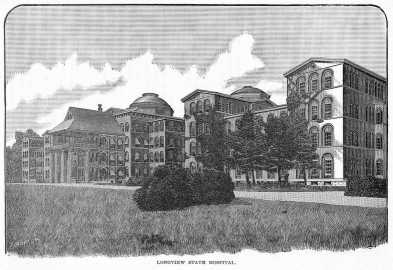|
THIS Asylum is one of the notable charities of Hamilton county, for which the state of Ohio Makes annual appropriations. It is the outgrowth of a combination of circumstances which have determined its peculiar legal status. It has been the subject of more than thirty years of contention, and its history is that of a great political wrong; and an account of its establishment, growth and present condition might not be uninteresting to the general public.
The first asylum for the insane erected in Ohio was built in Cincinnati, under an act of the Legislature, passed January 22, 1821, entitled, "an act establishing a Commercial Hospital and Lunatic Asylum for the state of Ohio."
By the terms of this enactment the trustees of Cincinnati township were to furnish a site for said institution, containing not less than four acres of land, within one mile of the public landing on the Ohio river, and erect the necessary buildings (which were to be of brick) for the safe-keeping, comfort and medical treatment of such idiots, lunatics and insane persons of this state as might be brought to it for these purposes. The trustees were to receive certain compensation for the care of such patients, to be paid by the county sending the same, if paupers, or by the friends or guardians, if the patients had estates.
In addition, the trustees were required to admit and care for, free of charge, all boatmen belonging to boats owned by citizens of Ohio or to boats of the citizens of other states which provided hospital accommodations to boatmen of this state. There were also required to receive into said institution, and care for, all the paupers of Cincinnati township.
The institution was to be known as "The Commercial Hospital and Lunatic Asylum of Ohio." The state donated, for the purpose of assisting in the erection of said asylum, $10,000 in depreciated or uncurrent bank bills then in the state treasury, from which were realized $3,500 in specie.
The Commercial Hospital and Lunatic Asylum of Ohio was the parent institution from which afterwards sprung the Orphan Asylum, the City Infirmary, the Cincinnati Hospital and Longview Asylum. It was the beginning, on the part of the state, which has led to the establishment of the great benevolent institutions of which every citizen of Ohio is justly proud.
The legislature, on March 7, 1835, authorized the purchase of land for a lunatic asylum, and at the next session authorized the erection of an asylum for the insane on the land recently purchased for that purpose at Columbus. Said institution was to be known as the Lunatic Asylum of Ohio. On March 9, 1838, an act was passed, entitled, "an act to provide for the safe-keeping of idiots, lunatics or insane persons, the management of their affairs and for other purposes," which required all persons found to be lunatics to be sent to the Ohio Lunatic Asylum, and repealing all acts and parts of acts inconsistent with the provision of said act. Thus the Cincinnati Hospital and Lunatic Asylum of Ohio ceased to be a state institution on Marcy 9, 1838, although the name remained till March 11, 1861, when it was changed to Commercial Hospital of Cincinnati.
The state afterwards, built two additional hospitals for the insane, one at Dayton and the other in the northern part of Ohio, and on April 7, 1856, the legislature passed "an act to provide for the uniform government and better regulation of the lunatic asylums of the state and the care of idiots and insane," which divided the state into three districts, known as the Northern, Central and Southern Districts. Hamilton county, together with thirteen other counties, constituted the Southern District, the asylum for which was located at Dayton, but, on March 10, 1857, the legislature passed an act making Hamilton county a separate district for lunatic asylum purposes, and providing for the erection and government of an asylum therein, and that the commissioners what cause all the insane of the county to be placed in such asylum when completed. The act further provided that the inmates of the asylum be supported and the salaries of its officers paid from "a fund consisting of all the money raised in the county of Hamilton by county tax for the support of idiots, lunatics and insane persons, and of such appropriations as shall be made by the state for the support of curable lunatics in said asylum, equal to the amount annually raised by taxation from the county of Hamilton for the support of lunatic asylums in the state." An act of April 28, 1873, which repealed the provision of the act of 1857, and substituted in its place a law which provided that Hamilton county should receive, for the support of Longview Asylum, a sum which should bear such a proportion to the entire appropriations for the support of the curable insane of the state as the populations for the support of Hamilton county bears to the population of the state outside of said county.
The injustice of the law of 1873 has been so apparent that no General Assembly since 1880 has insisted on its enforcement. In the years 1880 to 1883, both inclusive, the legislature appropriated $10,000 each year in excess of the amount due under the statute of 1873. Since 1883 the legislature has wholly disregarded the rule of 1873, and has appropriated to Longview gross sums, in the same manner that appropriations were made to the other asylums.
The care of the insane in Hamilton county is an exception to the general system of the state, and for more than twenty years spasmodic efforts have been made on the part of the state to acquire the ownership and control of Longview, and to make it part of the state system, but to no practical end.
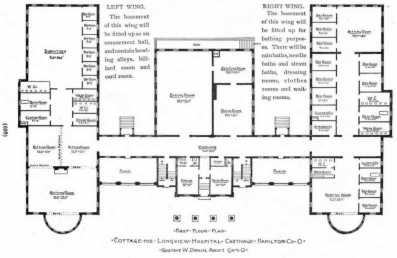
First Floor Plan
Cottage for Longview Hospital, Carthage, Hamilton Co., O.
Gustave W. Drach, Arch't, Cin'ti, O.
(Click on photo for full size version)
A new building to accomodate two hundred and fifty patients is being constructed by and at the expense of the county of Hamilton.
THE BOARD OF DIRECTORS OF LONGVIEW HOSPITAL.
The Board of Directors of Longview consists of five members, two of whom are appointed by the Governor, and one each by the Common Pleas Court, the Probate Judge and the County Commissioners. They hold office for five years, and are not removable except for cause, which gives the board a fixed tenure, and makes it free from sudden political changes.


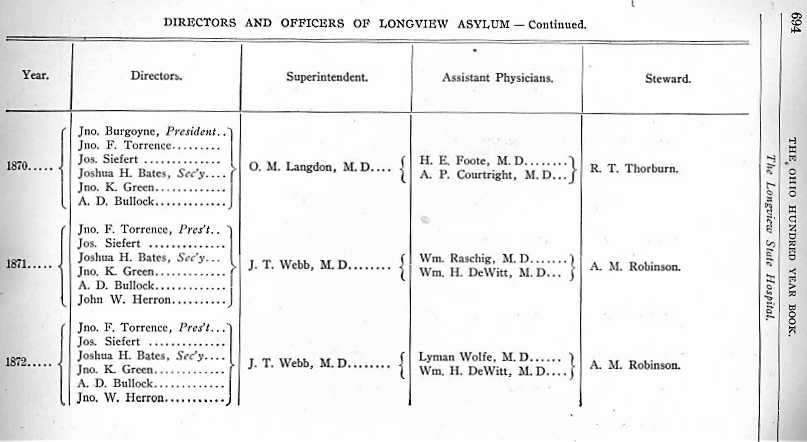

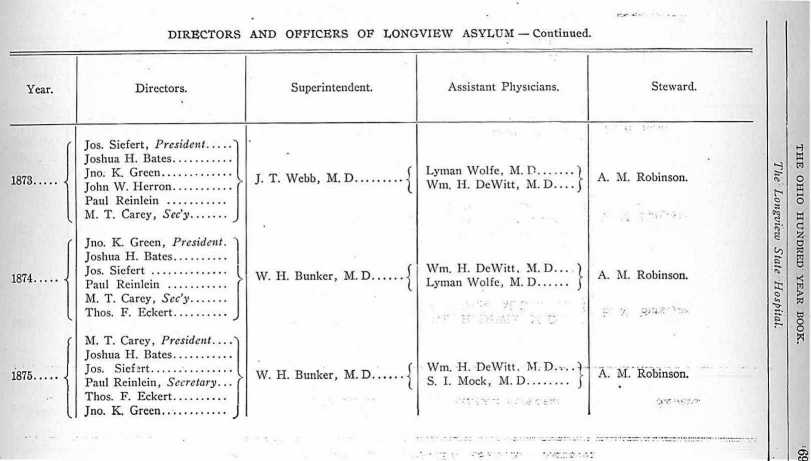
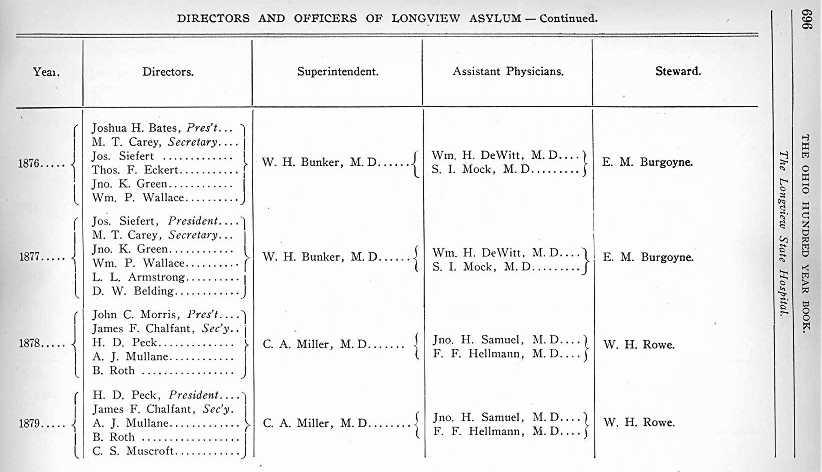
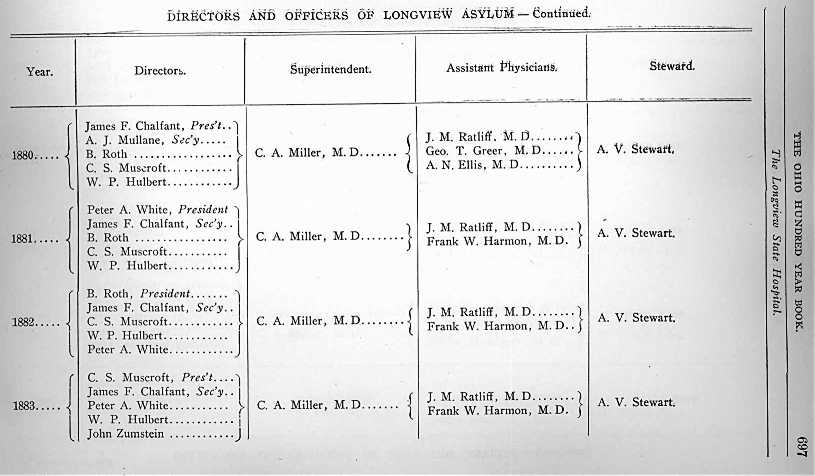
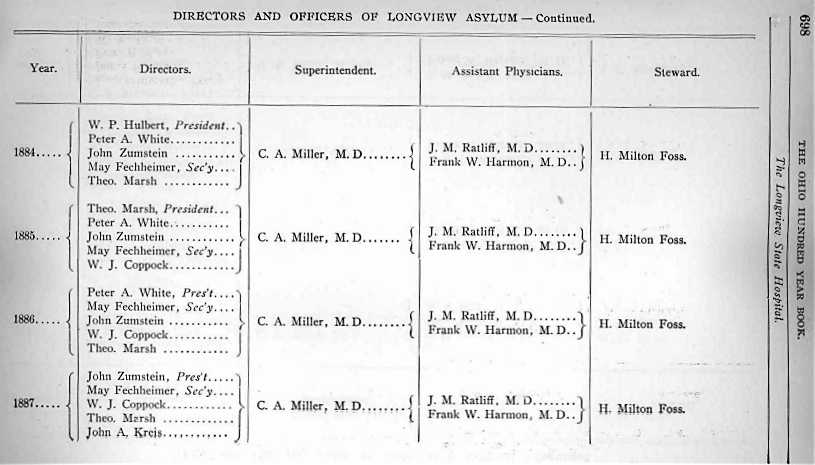
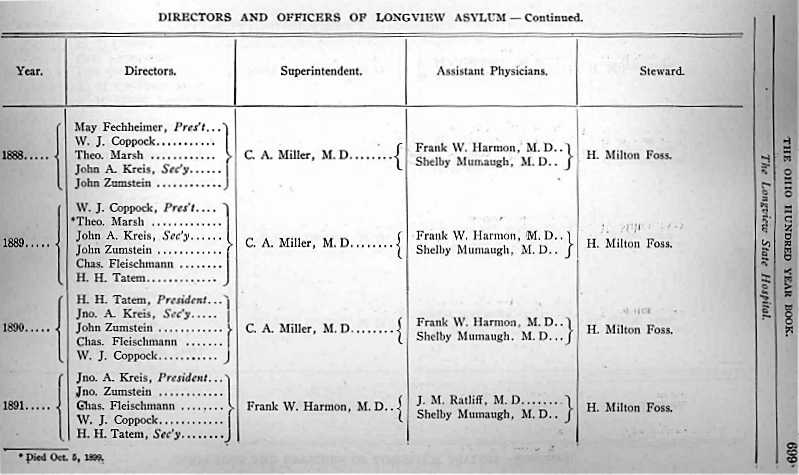
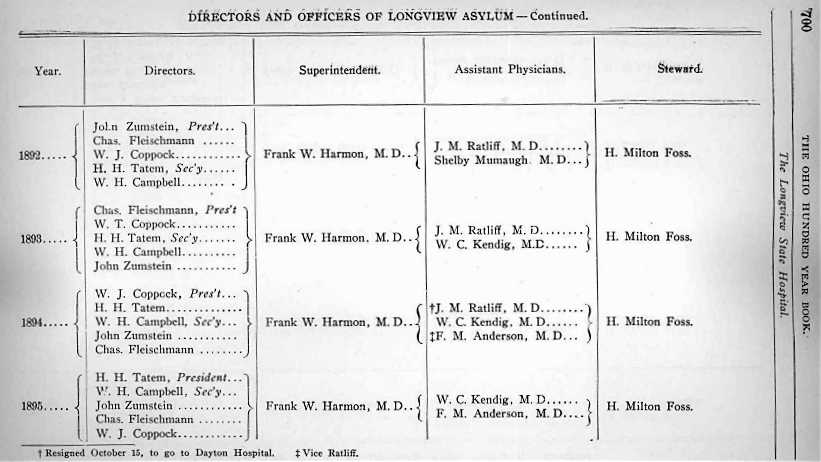
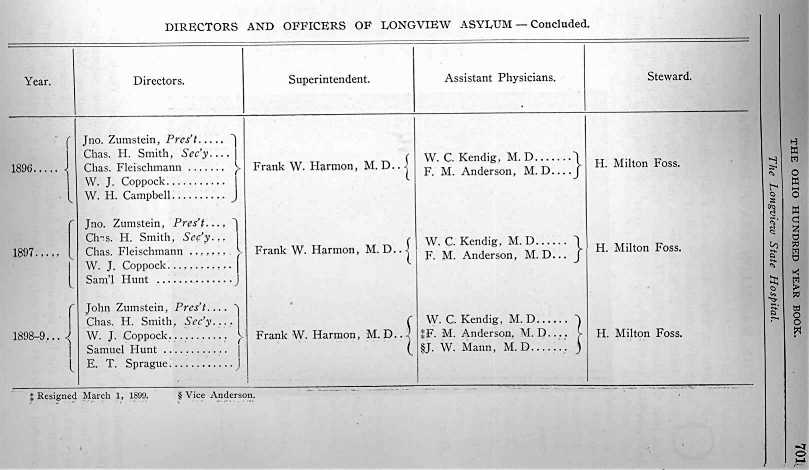
|
